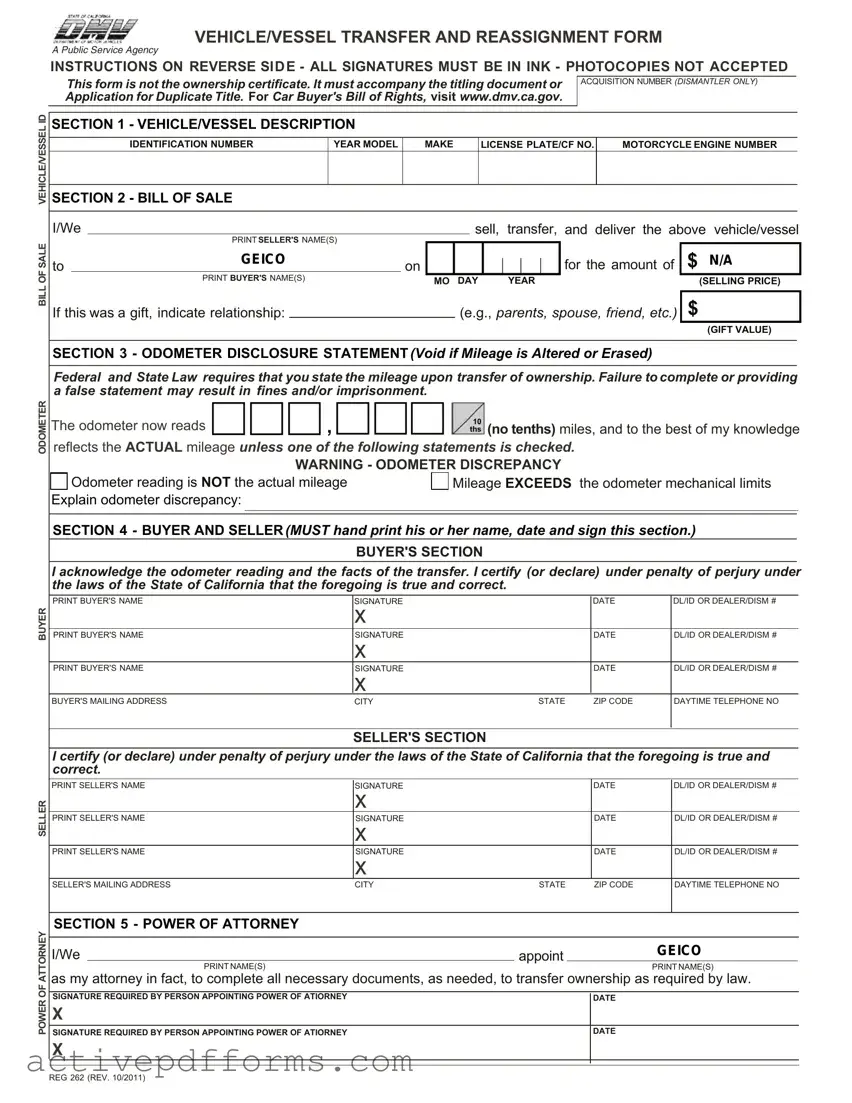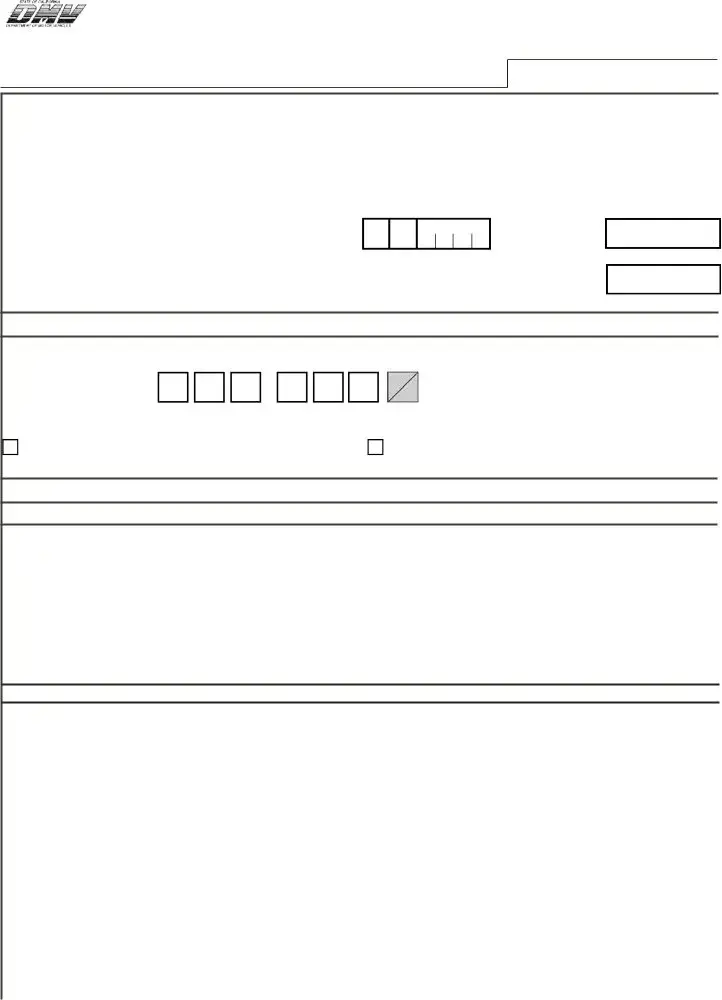- What is the California Form REG 262?
The California Form REG 262, also known as the Vehicle/Vessel Transfer and Reassignment Form, is a document required by the California Department of Motor Vehicles (DMV) for various ownership transactions. This form serves multiple purposes, such as a bill of sale, power of attorney, and odometer disclosure, and is necessary when the title or Application for Duplicate Title is being submitted to document the transfer of ownership.
- Where can I obtain Form REG 262?
Form REG 262 is not available online due to its carbon-copy nature. To obtain a copy, you must visit a local DMV field office, or you may request that a copy be mailed to you by contacting the DMV through their official contact channels.
- Why is the REG 262 form required?
The REG 262 form is required to legally document the details of the transfer of ownership for a vehicle or vessel in California. It captures essential information, including the names of the buyer and seller, vehicle description, sale price, odometer reading, and signatures acknowledging the transaction. This form ensures that the transfer is recognized by the DMV and helps in maintaining accurate records.
- What sections are included in the REG 262 form?
The REG 262 form includes several sections:
- Section 1: Vehicle/Vessel Description
- Section 2: Bill of Sale
- Section 3: Odometer Disclosure Statement
- Section 4: Buyer and Seller Information
- Section 5: Power of Attorney
Each section collects different pieces of information vital to the vehicle's or vessel's transfer of ownership process.
- Can I submit a photocopy of Form REG 262 to the DMV?
No, photocopies of Form REG 262 are not accepted by the DMV. Because the form is carbon-copy, original signatures and details are required for processing. The form must accompany the title or Application for Duplicate Title in its original form when submitted.
- How do I complete the odometer disclosure section on REG 262?
The odometer disclosure section requires the current mileage of the vehicle and the seller's acknowledgment that the mileage specified is correct to their knowledge. If the odometer reading is not the actual mileage, or if it exceeds mechanical limits, this should be indicated in the provided checkboxes along with an explanation.
- What if I make a mistake filling out Form REG 262?
If a mistake is made while filling out Form REG 262, it is advised to obtain a new form and start over. Alterations such as write-overs, cross-outs, and erasures may void specific sections or potentially the entire form, making it unacceptable for DMV processing.
- Is the REG 262 form necessary for gift transactions?
Yes, the REG 262 form is necessary for gift transactions. In Section 2 of the form, there is an option to indicate that the vehicle/vessel transfer is a gift, requiring the relationship between the giver and the recipient to be stated along with the gift's value. This information is crucial for the DMV to process the transfer appropriately and assess any taxes or fees that may apply.

